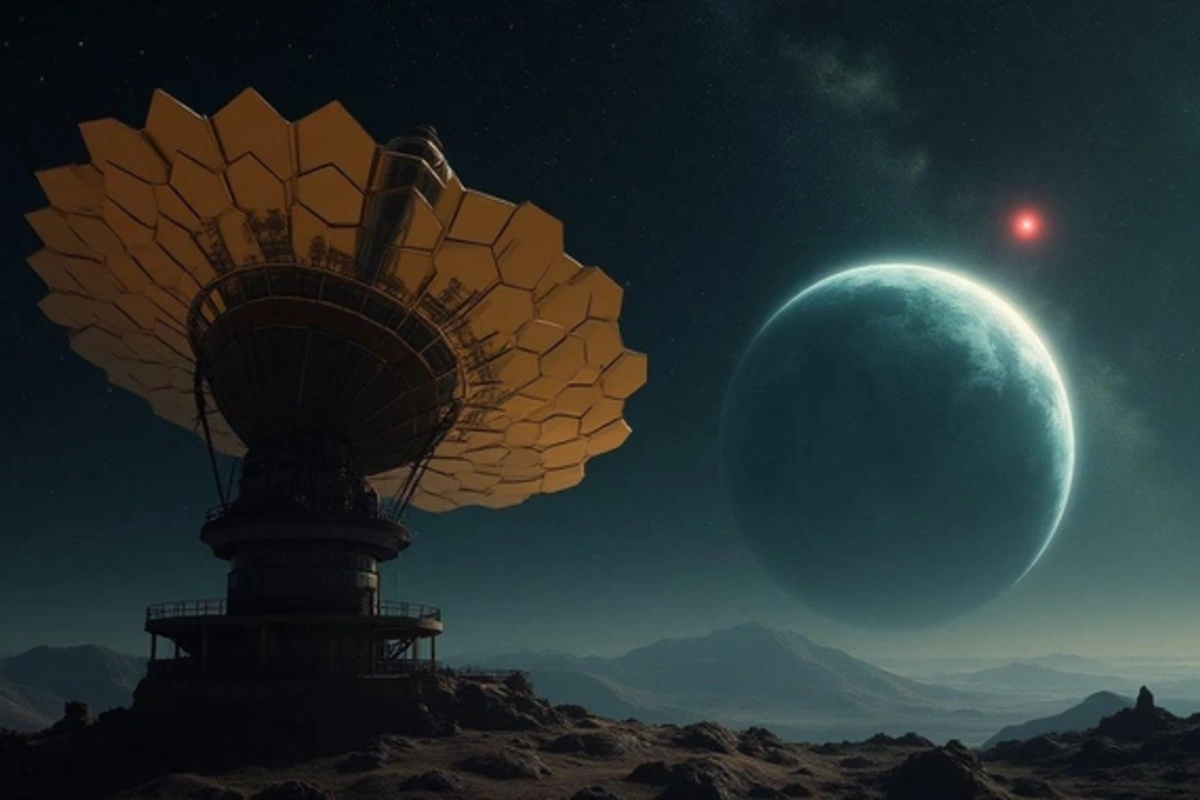05 Jun , 10:41
0

Sensation in space: "James Webb" discovers possible traces of life on a distant exoplanet
A revolutionary discovery has shaken the scientific world! The James Webb Space Telescope has detected signs of possible life existence on exoplanet K2-18 b, located 120 light years from our planet in the Leo constellation. This cosmic giant, exceeding Earth's mass by more than eight times, is situated in the "habitable zone" of its star - a cool dwarf, creating ideal conditions for liquid water - a fundamental element for the origin of life.
Scientists, analyzing data from "James Webb", made an astonishing discovery - dimethyl sulfide (DMS), a compound of carbon, hydrogen, and sulfur, was found in the atmosphere of K2-18 b. On Earth, this molecule is a "signature" of living organisms, predominantly marine phytoplankton. However, researchers exercise scientific caution and emphasize the need for additional observations to definitively confirm this sensational discovery.
The atmosphere of the mysterious exoplanet is also rich in carbon dioxide and methane. The combination of these gases with the possible presence of dimethyl sulfide creates a fascinating picture of a world potentially suitable for life existence or even already inhabited by unknown forms of organisms.
K2-18 b belongs to a rare class of "Hyceans" - exoplanets with hydrogen-rich atmospheres and presumably vast oceans. This type of celestial body represents something between the known super-Earths and mini-Neptunes. The diameter of K2-18 b significantly exceeds Earth's, and its composition represents a unique mixture of rocky and icy components.
If the presence of dimethyl sulfide is confirmed, K2-18 b will take a place in the elite list of cosmic objects with the highest probability of extraterrestrial life existence, along with Mars and the icy giant moons of Jupiter and Saturn - Europa and Enceladus. Since the historic discovery of the first exoplanet in 1995, astronomers have cataloged thousands of similar worlds, but K2-18 b stands out for its unique characteristics and strategic location in the habitable zone.
The scientific community is not stopping at what has been achieved - further observations of K2-18 b are planned using the capabilities of the James Webb telescope. Researchers intend not only to confirm the presence of dimethyl sulfide but also to discover other biomarkers, including methyl chloride. These studies will shed light on the composition of the mysterious exoplanet's atmosphere and its potential for sustaining life.
This outstanding discovery once again demonstrates the invaluable role of modern astronomical technologies in revealing the secrets of distant worlds